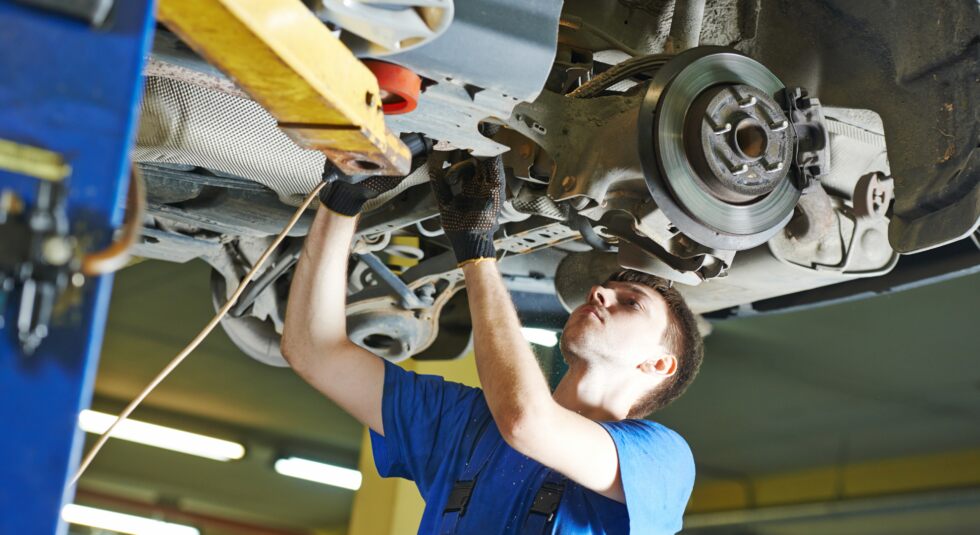A Practical Guide to Keeping Your Vehicle Reliable and Repair Costs Low
At All Around Auto Repair, we often tell our customers one simple truth: Preventive maintenance costs a little now—but saves a lot later. Whether you’re driving a brand-new sedan or an older SUV with some miles under the hood, regular maintenance is the key to keeping your car reliable, safe, and on the road for years to come.
Many major repairs—like engine damage, transmission failure, or brake system problems—don’t happen overnight. They develop gradually when small issues are ignored. That’s why routine care isn’t just a good idea; it’s one of the smartest investments you can make.
Below are our top 7 car maintenance tips that every driver should follow to avoid expensive breakdowns, improve vehicle performance, and extend the life of their car.
1. Change Your Oil Regularly
Why it matters:
Engine oil lubricates all the moving parts inside your engine. Without clean oil, friction builds up, metal grinds against metal, and your engine wears out much faster. Old or dirty oil also causes sludge buildup, which can block passages and lead to serious internal damage.
How often to do it:
- Every 5,000 to 7,500 miles for most vehicles using synthetic oil
- Check your owner’s manual for your specific model
- If you drive in harsh conditions (short trips, stop-and-go traffic, extreme temperatures), more frequent changes may be needed
Bonus tip: Don’t just rely on mileage—check your oil level monthly and look for changes in color or consistency.
2. Check and Top Off Your Coolant and Brake Fluid
Why it matters:
Two of the most overlooked but critical fluids in your car are coolant (antifreeze) and brake fluid. Coolant prevents your engine from overheating, while brake fluid enables your brakes to respond quickly and safely.
Low coolant levels can lead to overheating, warped engine components, and blown head gaskets.
Contaminated brake fluid can cause a soft pedal feel and even total brake failure.
How often to check it:
- Coolant: Check every 3 months or before long trips
- Brake fluid: Check at least twice a year and replace every 2 years or as recommended
Warning signs:
- Rising engine temperature
- A sweet smell under the hood (coolant leak)
- Soft or spongy brake pedal
3. Keep Your Battery in Top Shape
Why it matters:
A failing battery can leave you stranded without warning. But battery problems often start small—corrosion on terminals, weak starts, or electrical glitches—and escalate over time.
How to maintain it:
- Inspect the terminals for corrosion (white or blue buildup)
- Clean terminals with a wire brush and baking soda solution if needed
- Test battery voltage regularly, especially before winter and summer
- Replace your battery every 3 to 5 years, depending on use and climate
Pro tip: If your headlights dim when idling or your car struggles to start, have the battery and charging system tested by a technician.
4. Get Your Wheels Aligned and Balanced
Why it matters:
Proper alignment and balance help your car drive straight, reduce tire wear, and improve fuel efficiency. Misaligned wheels cause your car to pull to one side and lead to premature wear on suspension parts and tires.
Signs you need an alignment or balance check:
- Your steering wheel isn’t centered when driving straight
- The car pulls to the left or right
- Vibration in the steering wheel at certain speeds
- Uneven or rapid tire wear
How often to check it:
- At least once a year
- After hitting a large pothole or curb
- When installing new tires
5. Replace or Clean the Air Filter
Why it matters:
Your engine needs clean air to burn fuel efficiently. A dirty or clogged air filter reduces airflow, causing poor fuel economy, sluggish acceleration, and added stress on engine components.
How often to replace it:
- Every 12,000 to 15,000 miles for most vehicles
- More often if you drive in dusty or urban areas with poor air quality
Check it sooner if:
- Your engine sounds louder than usual
- You notice reduced acceleration
- Fuel economy drops without explanation
6. Don’t Ignore Your Timing Belt or Chain
Why it matters:
The timing belt (or chain) keeps your engine’s valves and pistons operating in perfect sync. If it snaps, it can cause catastrophic engine damage—especially in interference engines where valves and pistons may collide.
How often to replace it:
- Timing belts: Every 60,000 to 100,000 miles, depending on your vehicle
- Timing chains: Can last longer, but still need inspection, especially after 120,000 miles
Signs of a failing belt or chain:
- Ticking noise from the engine
- Misfires or rough running
- Trouble starting
- Oil leaking from the timing cover
Warning: Replacing a timing belt is not cheap—but rebuilding an engine is far more expensive. Preventative replacement saves thousands.
7. Schedule Routine Inspections and Tune-Ups
Why it matters:
You might not always notice when something starts to go wrong—especially if the issue develops slowly. That’s why periodic professional inspections are essential.
What’s included in a routine inspection:
- Visual check of belts, hoses, and engine components
- Fluid levels and condition
- Brake wear
- Tire condition and pressure
- Battery, alternator, and starter testing
- Diagnostic scan for error codes (even if your check engine light isn’t on)
How often:
- At least once a year or every 12,000 miles
- Before road trips or after long periods of inactivity
Think of tune-ups and inspections like regular doctor visits for your car—they help catch small issues before they turn into emergencies.
Regular Maintenance Is an Investment—Not an Expense
Too many drivers skip routine maintenance thinking they’re saving money. In reality, neglecting the basics can lead to thousands of dollars in preventable repairs.
Let’s put it in perspective:
|
Service |
Estimated Cost |
What It Prevents |
|
Oil Change |
$60–$100 |
Engine failure ($4,000+) |
|
Timing Belt Replacement |
$600–$1,200 |
Total engine damage |
|
Brake Fluid Flush |
$100–$150 |
Brake system failure |
|
Battery Check |
Often Free |
Stranded car, tow bill |
|
Alignment |
$100–$150 |
Uneven tire wear, suspension damage |
By investing a few hundred dollars a year in maintenance, you could avoid repairs costing 10 times as much—not to mention the stress of breakdowns or the danger of driving with compromised components.
Trust All Around Auto Repair with Your Vehicle’s Health
At All Around Auto Repair, we’ve been helping drivers stay safe on the road since 2001. Our team of experienced, certified technicians understands the importance of routine maintenance—and we’re here to make it simple, honest, and affordable.
Whether you need an oil change, brake inspection, battery test, or a full tune-up, we’ll walk you through exactly what your car needs (and what it doesn’t). No pressure. No gimmicks. Just professional care you can trust.
Ready to Take Better Care of Your Car?
Don’t wait for a breakdown to remind you how much your car matters.
Schedule a maintenance appointment today and enjoy peace of mind every time you start the engine.
All Around Auto Repair — Repair. Maintenance. Service. Since 2001.
We’ll help you keep your car running like it should—now and for the miles ahead.





